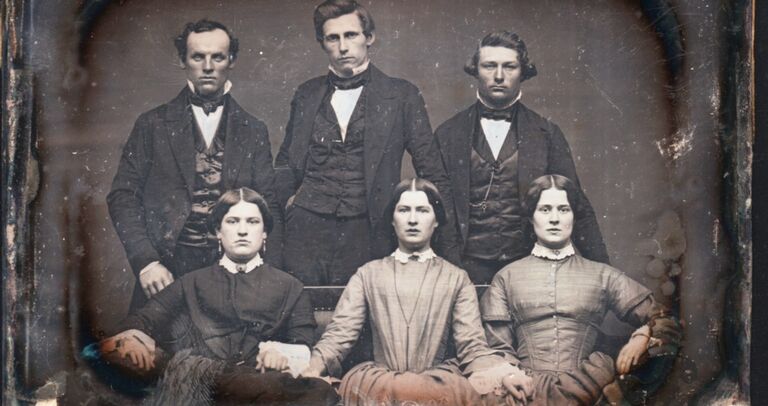Why People Never Smiled In Old Photographs
When you look at photographs from more than 100 years ago, you’ll likely find grim expressions and scowling faces staring back at you. It’s enough to make you think that people must have been really miserable in Victorian times... But why was everyone seemingly in such a bad mood? Experts believe they’ve found at least some of the answers to this question — and a few of them are more sinister than you think. But not all old photographs are deadly serious, and the rare lighthearted ones are incredible.
Why so serious?
Those rare smiles didn't start to appear in old photographs with any frequency until at least the 1920s. And considering that the very first photographs started to be taken in the 1820s, that's a very long time to keep such dour expressions. You'll spot a few smiles in the earliest photographs, of course, but as this new medium began to be adopted by families in the early 19th century, the standard expression was distinctly solemn.
Smiling is not a natural instinct
It could be that the subjects of these pictures just didn't know how to behave in front of a camera. Christina Kotchemidova, an assistant professor at Spring Hill College, explained in a paper called "Why We Say 'Cheese': Producing the Smile in Snapshot Photography" that the concept of it's “natural to smile for a picture” is a modern one. She argued that smiling for a camera is not a natural instinct.
The sad Victorian is a cliché
It’s also not true that people in Victorian times were always sad or troubled. The lack of smiles in photos could support this cliché, of course, and Victorian people were living at a time that was indeed full of sorrow. The mortality rate was certainly a lot higher than it is today, and the standard of medicine was way beyond what we now take for granted. But the evidence against this notion of the sad Victorian is overwhelming.
There were good times to be had
You only have to think of the most popular figures from this era to realize that the Victorians had a sense of humor. Sure, Charles Dickens wrote some pretty harrowing tales — but there was a wicked streak of comedy running through many of them. And nobody would accuse Lewis Carroll of not having a wild imagination or a twisted idea of fun.

